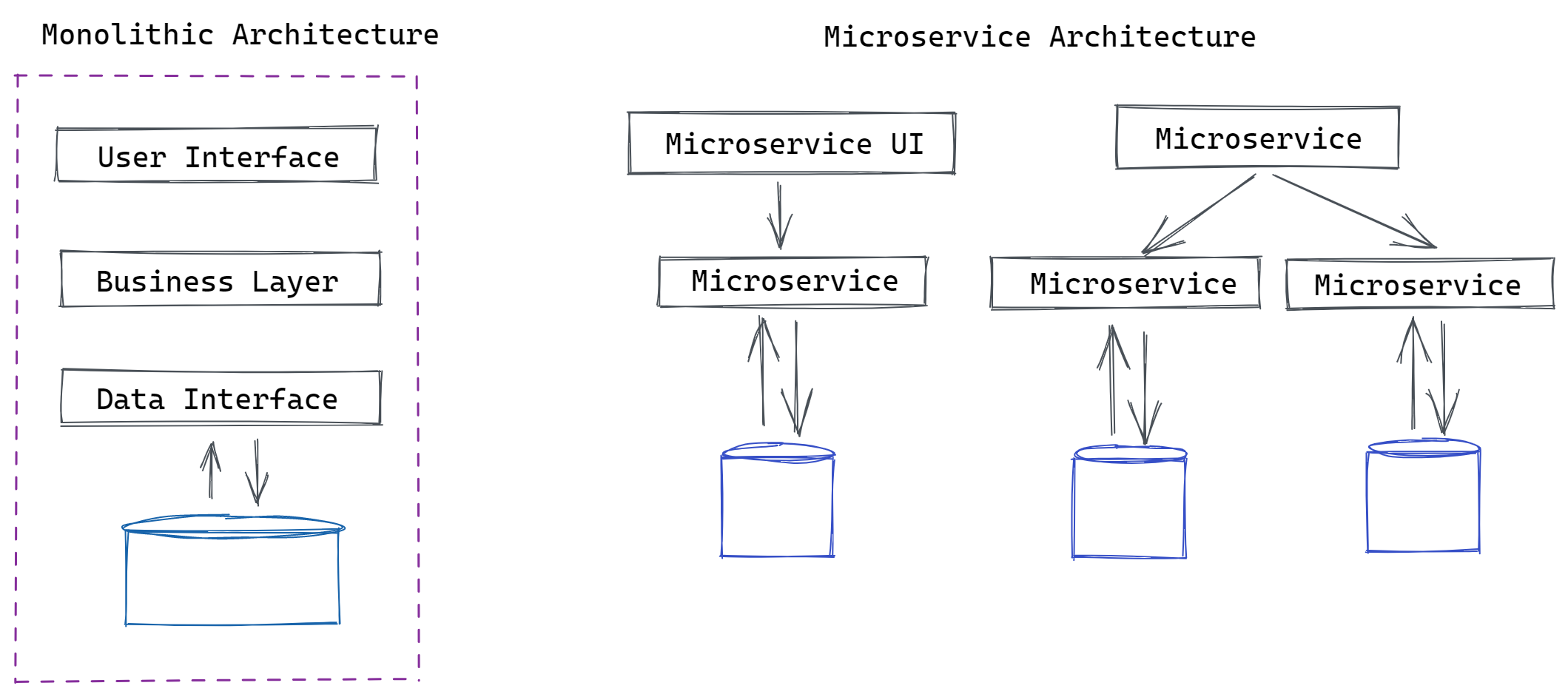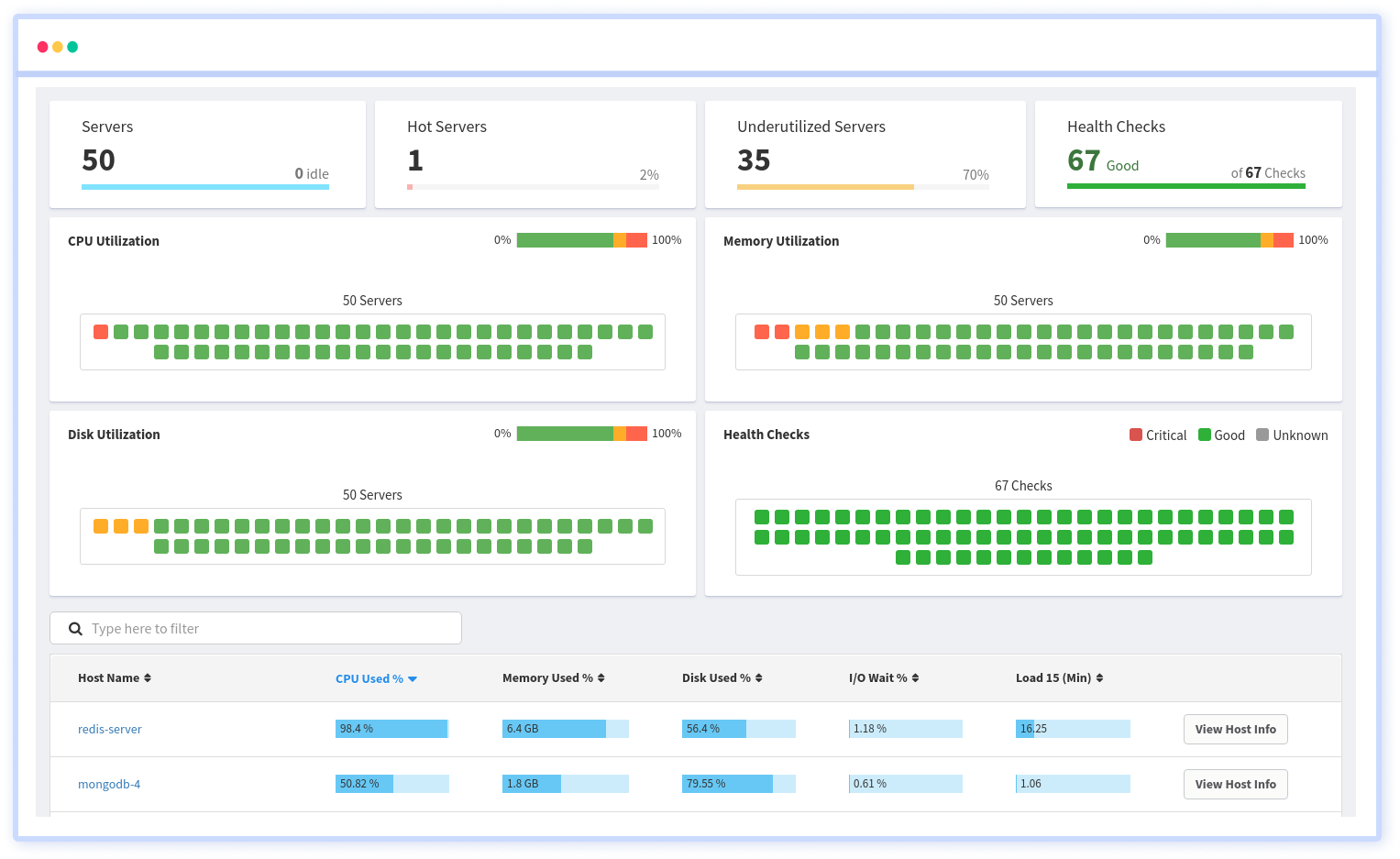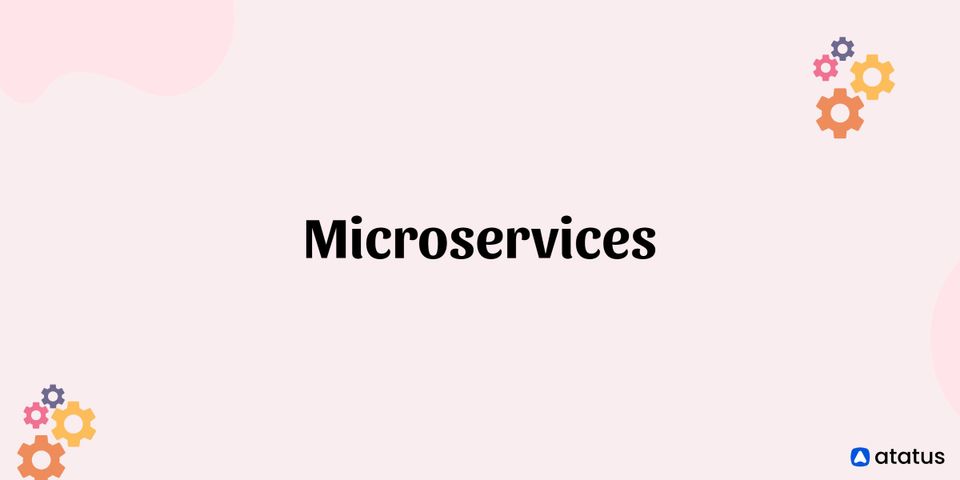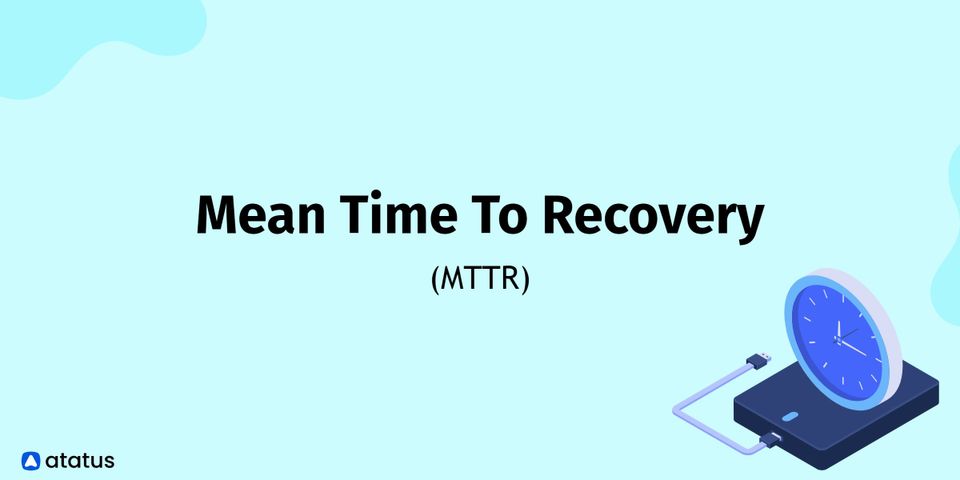Microservices are the way software development will be done in the future. This technique is a server-side development option in which services are connected yet work independently of one another.
Microservices are being used by more developers to improve performance, precision, and productivity, and analytical tools give them vital information on performance and service levels.
We will cover the following:
- What are Microservices?
- How does Microservices Work?
- Characteristics of Microservices
- Benefits of Microservices
- Monolithic Architecture vs. Microservices Architecture
What are Microservices?
Microservices are an architectural approach in software development that organises systems as a collection of loosely connected services, making it easier for developers to create and grow applications. Microservices architecture differs from traditional monolithic architecture, which focuses on a single entity for software development.
It is similar to a manufacturing assembly line, with each service serving as a station. Microservices are similar to stations in that each is accountable for a single task. Each station is an "expert" in its assigned responsibilities, ensuring that the workflow and outputs are efficient, consistent, and of high quality.
In a manufacturing environment, each station is in charge of constructing the entire product. This is similar to a monolithic software application that completes all tasks in a single procedure.
The microservices approach divides software development into smaller, self-contained "chunks," each of which performs a specific service or function. Microservices make use of technologies like integration, API management, and cloud deployment.
Microservices have become necessary due to a lack of resources. Developers need a new approach to development as apps to grow larger and more involved, one that allows them to easily extend apps as user wants and requirements change.
How does Microservices Work?
Microservices are a design pattern in which each service is a small component of a larger system. Each microsystem contributes to the eventual outcome by performing a specialised task with a limited scope. Each assignment could be as straightforward as "compute the input data set's standard deviation" or "count the number of words in the text."
To create microservices, you must first organise the system to identify different subtasks, and then write apps to solve each subtask. Because each microservice must convey output data to the next, a microservices design frequently employs a lightweight messaging system.
For a variety of reasons, microservices are preferable to monolithic applications. They're easier to build, deploy, scale, maintain, and so on.
They're based on older design patterns like SOA, modularity, and separation of concerns. They propose a novel approach to designing large-scale systems that would be difficult to handle in standard monolithic architecture.
Building microservices has no predefined requirements in general, which provides application developers with a lot of freedom in terms of programming language, technical environment, and deployment alternatives. Specific requirements often determine technology selection, and in-memory processing engines are commonly utilised when high speed and low latency are required.
The microservices paradigm allows software development teams to take a more decentralised approach to software development. Each service can be detached, rebuilt, reinstalled, and managed on its own.
If an application fails to generate reports, for example, IT staff can trace the problem to a specific service, which they can then test, restart, patch, and redeploy as needed, independent of other services.
Characteristics of Microservices
The functions of a complete application are created through the intercommunication and data exchanges between discrete components and services in a microservices architecture. The following are typical characteristics of a microservices design and architecture:
Designed for Business
Microservices are typically arranged around the capabilities and priorities of the business. Unlike a traditional monolithic development strategy, where various teams specialise in different aspects of the project, such as user interfaces, databases, technological layers, or server-side logic, the microservice architecture makes use of cross-functional teams.
Each team is responsible for developing specialised products based on one or more individual message bus services.
Multiple Components
Microservices software can be broken down into several component services by definition. These services can be provided, upgraded, and re-deployed without putting their integrity at risk. As a result, rather than needing to reload complete applications, you may only need to modify one or more specific services.
However, there are also drawbacks to this technique, including the cost of remote calls (rather than in-process calls), coarser remote APIs, and more complexity when redistributing responsibilities between components.
Decentralized
Traditional centralised governance solutions aren't suited for microservices because they leverage the diversity of technologies and platforms. The microservices community prefers decentralised governance because its developers try to create helpful tools that may be used by others to tackle similar challenges.
Microservice design, like decentralised governance, encourages decentralised data management. For all applications, monolithic systems use a single logical database. Each service in a microservice application usually has its own database.
Failure Resistant
Microservices, like a well-rounded child, are built to deal with failure. Since numerous distinct and disparate services are talking with one another, it's entirely possible that one of them will fail for whatever reason. In these situations, the client should leave adjacent services running while gracefully exiting.
Microservice monitoring, on the other hand, can help to reduce the chance of failure. Microservices are more sophisticated than monolithic systems architecture because of this requirement.
Simple Routing
Microservices take requests, process them, and answer correctly in the same way that standard UNIX systems do. Message routing, choreography, and the application of business rules are all handled by high-tech systems in many other products, such as ESBs (Enterprise Service Buses). Smart endpoints that analyse data and apply logic, as well as dumb pipelines through which data flows, make up microservices.
Evolutionary
Microservices architecture is an evolutionary design that is appropriate for evolutionary systems where the types of devices that may access your application in the future are unknown.
Many applications begin with a monolithic architecture, but as new requirements emerge, they can be gradually transformed into microservices that connect with an older monolithic architecture via APIs.
Benefits of Microservices
The cloud, containerization, and hyperconnected systems have all aided the growth of microservices designs and deployments. Microservices present a set of tradeoffs for software developers.
- Agility
Microservices encourage the formation of small, self-contained teams that are responsible for their own services. Teams are empowered to operate more independently and quickly within a small and well-understood environment. The development cycle will be shorter as a result of this. The organization's overall throughput benefits you greatly. - Flexible Scaling
Each microservice can be grown separately to meet the demand for the application feature it supports. This allows teams to properly size infrastructure, appropriately estimate the cost of a feature, and ensure service availability in the event of a spike in demand. - Resilience
The resistance to failure of an application is increased when it is service independent. If a single component fails in a monolithic architecture, the entire application can fail. Instead of crashing the entire application, microservices allow apps to handle total service failure by decreasing functionality. - Reusable Code
Teams can use functions for many purposes by dividing software into discrete, well-defined modules. A service created for one function can be used as a foundation for another feature. This allows an application to self-bootstrap since developers may add new features without having to write code from scratch. - Simple to Implement
Continuous delivery and continuous integration in microservices allow for new ideas and the ability to roll back if something doesn't work out. More experimentation, quicker code modifications, and faster time-to-market for new features are all made possible by the low cost of failure. - Technological Independence
Microservice architectures aren't built in a "one-size-fits-all" method. Teams are allowed to use whatever tool they want to tackle their challenges. As a result, teams developing microservices can select the most appropriate tool for each task.
Monolithic Architecture vs. Microservices Architecture

All of the code in a monolithic architecture is contained in a single main executable file. Because a fault in a codebase might occur anywhere in the product, it can be more difficult to troubleshoot, test, and update. Because of the quantity of monolithic code involved, more and more testing is required.
Furthermore, any minor change or update to a monolithic application required the development and deployment of an entirely new version of the application. Monolithic application development requires a lot of planning, preparation, time, and money.
Microservices architectures are more agile than monolithic software architectures because they allow for faster software development and deployment. Microservices can let you test and deliver changes more quickly.
If a software problem emerges, the service can be isolated, remediated, tested, and redeployed without having to regression test the entire application, as is the case with traditional monolithic applications.
Scaling monolithic applications can be tough. The only possible solution when a monolithic application reaches a capacity limit, such as data throughput or another bottleneck, is to deploy a new complete iteration of the monolithic application and utilise load balancers to manage traffic between the instances.
An individual microservices application, on the other hand, can be scaled by adding container instances of only that service. As a result, growing microservices is considerably more resource-efficient than expanding monolithic applications.
Microservices aren't management-free. Each service in a microservices design is isolated from the others, making it difficult to keep track of all the moving elements. To track the availability and performance of all component services operating within a microservices application, for example, thorough monitoring and management are required.
Conclusion
It's naturally tough to create sophisticated apps. Only basic, lightweight applications benefit from a monolithic architecture. If you use it for complex applications, you'll find yourself in a world of suffering. Despite its disadvantages and implementation issues, the Microservices design pattern is the preferable choice for complex, developing applications.
Microservices have had a huge impact on software development in the last several years. This alternative to the monolithic architectural model, which dominated software development for years, allows teams to create, monitor, manage, deploy, and scale all types of applications via the cloud in a streamlined manner.
Further Reading:
Monitor Your Server with Atatus
Atatus provides server monitoring, allowing you to analyze and manage business-critical performance issues. Correlating application metrics, logs, and traces can help you make better business decisions and troubleshoot issues faster. You'll be able to see how your servers or cloud instances are being used in real-time.

Atatus can be beneficial to your business, which provides a comprehensive view of your application, including how it works, where performance bottlenecks exist, which users are most impacted, and which errors break your code for your frontend, backend, and infrastructure.





